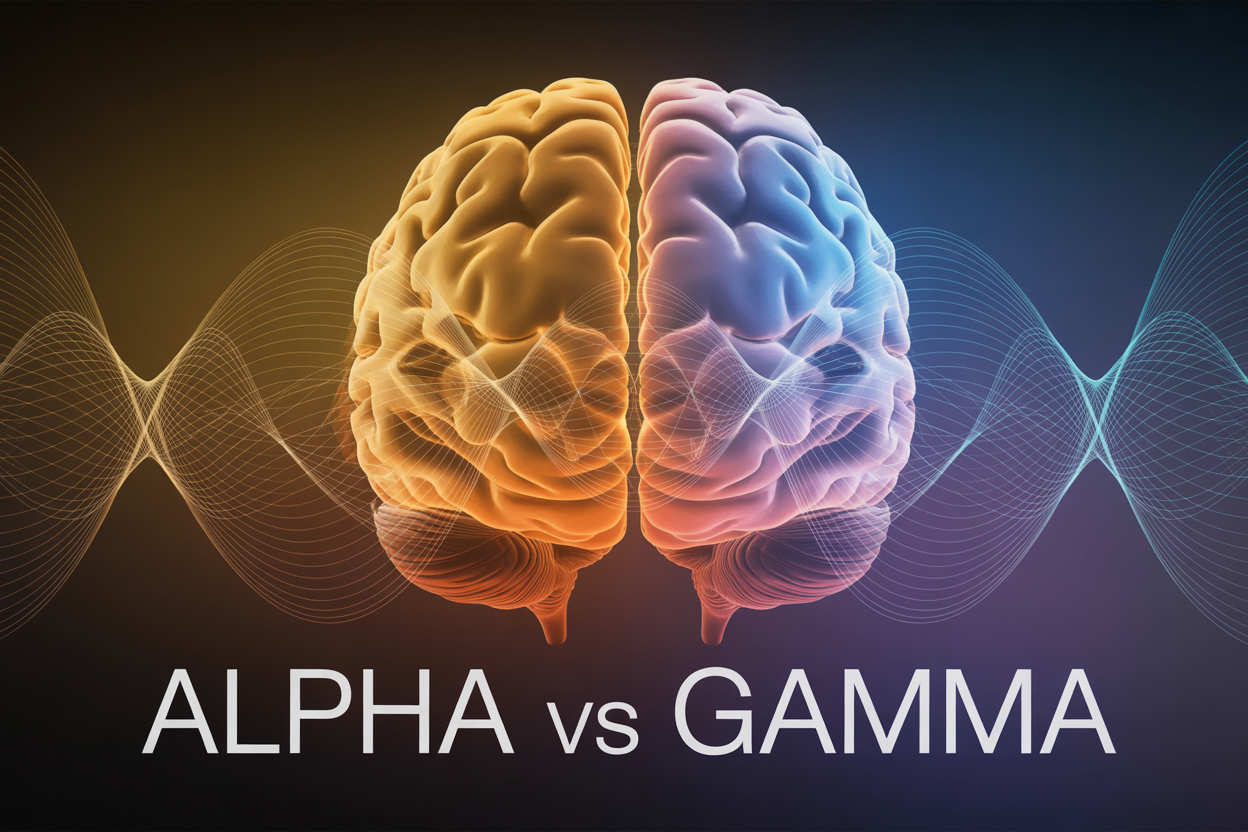The Parallel Universe: A Journey Beyond the Known Cosmos
Ever wondered if another version of you exists somewhere else, maybe making different life choices or living in a world where dinosaurs never went extinct? The concept of parallel universes has moved from science fiction into serious scientific discussion, captivating curious minds who want to explore what lies beyond our everyday reality.
This deep dive is perfect for science enthusiasts, students, and anyone fascinated by the mysteries of existence who’s ready to challenge their understanding of what’s possible. You don’t need a physics degree to grasp these mind-bending concepts – we’ll break down complex multiverse theory into digestible ideas that spark your imagination.
We’ll explore the solid science behind parallel dimensions, including how quantum physics multiverse theories actually work and what evidence scientists have gathered so far. You’ll discover the different types of alternate realities that could exist right now, from quantum mechanical parallel universes to cosmic-scale variations of our entire universe. Finally, we’ll examine how these cosmic theories might reshape your view of existence itself and what real-world applications could emerge from multiverse science.
Get ready to question everything you thought you knew about reality and step into a world where infinite possibilities aren’t just fantasy – they might be the fundamental nature of existence itself.
Understanding the Science Behind Parallel Universes
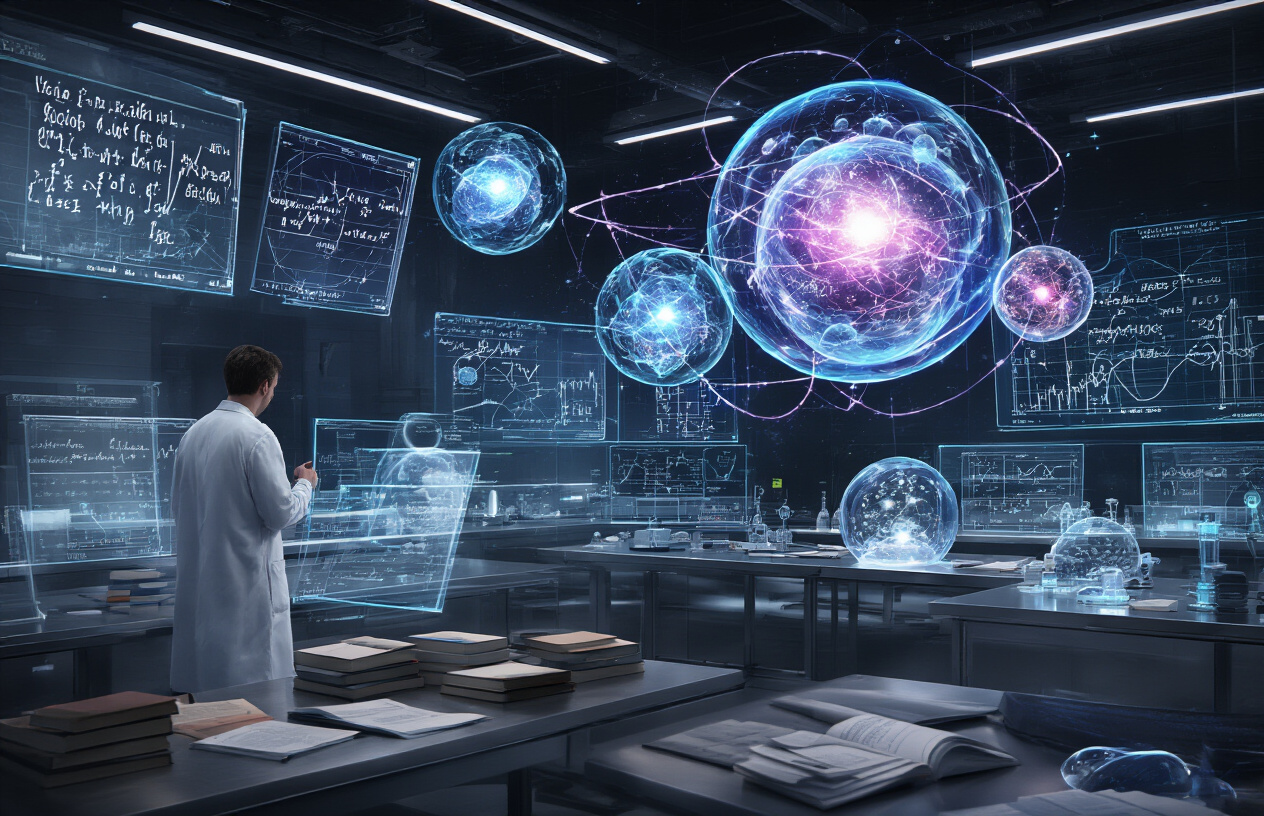
Quantum Mechanics and the Many-Worlds Interpretation
The many worlds interpretation stands as one of the most mind-bending concepts in quantum physics multiverse theory. When physicist Hugh Everett III proposed this idea in 1957, he challenged everything we thought we knew about reality. Picture this: every time a quantum event occurs – say, a particle’s spin or an electron’s position – the universe literally splits into multiple versions.
Think about flipping a coin. In our everyday experience, it lands either heads or tails. But according to the many-worlds interpretation, the universe branches into two separate realities – one where it’s heads, another where it’s tails. Both outcomes exist simultaneously in parallel dimensions, each equally real.
This quantum mechanics parallel universes concept emerges from the fundamental weirdness of quantum superposition. Before measurement, particles exist in all possible states at once. The standard Copenhagen interpretation says measurement “collapses” this superposition into one outcome. But Everett’s many-worlds says no collapse happens – instead, parallel universe realities split off to accommodate every possible quantum outcome.
The math behind this is surprisingly elegant. Schrödinger’s wave function doesn’t collapse; it continues evolving, describing multiple coexisting realities. Each branch becomes causally isolated from others, creating infinite parallel worlds branching from every quantum event. Scientists estimate trillions of quantum events occur every second, suggesting an incomprehensibly vast multiverse theory where every possible version of reality exists somewhere.
String Theory’s Role in Multiverse Concepts
String theory revolutionizes our understanding of alternate realities by suggesting that fundamental particles aren’t point-like objects but tiny vibrating strings. These strings exist in dimensions beyond our familiar three spatial dimensions plus time. The theory requires up to eleven dimensions for mathematical consistency, opening doorways to extraordinary multiverse possibilities.
The landscape of string theory contains roughly 10^500 different vacuum states – each representing a unique set of physical laws and constants. This staggering number suggests countless parallel dimensions where physics operates differently. Some universes might have stronger gravity, different electron masses, or entirely alien force interactions.
Brane cosmology, an extension of string theory, proposes our universe exists on a three-dimensional “brane” floating in higher-dimensional space called the “bulk.” Other branes could harbor completely different universes, occasionally interacting through gravitational effects that leak between dimensions. This brane-world scenario provides a concrete mechanism for cosmic theories involving multiple universes.
String theory also predicts cosmic inflation could create bubble universes within an eternally expanding multiverse. Each bubble represents a separate universe with its own physical properties, forever causally disconnected from others. The mathematics suggests this process continues indefinitely, generating an infinite collection of parallel worlds theory realities.
Mathematical Models Supporting Parallel Reality
Mathematical frameworks supporting multiverse science extend far beyond theoretical speculation. The Wheeler-DeWitt equation, quantum cosmology’s fundamental equation, naturally includes multiple universe solutions. When applied to the entire cosmos, this equation suggests reality consists of all possible quantum states existing simultaneously.
Chaotic inflation theory, developed by physicist Andrei Linde, provides compelling mathematical evidence for reality beyond cosmos we observe. The model shows how quantum fluctuations during cosmic inflation could spawn countless pocket universes, each with randomly selected physical constants. The mathematics predicts this process never stops, creating an eternally inflating multiverse where every possible combination of physical laws gets realized somewhere.
| Mathematical Model | Key Prediction | Parallel Universe Type |
|---|---|---|
| Eternal Inflation | Infinite bubble universes | Level I – same physics, different initial conditions |
| Quantum Mechanics | Many-worlds branching | Level III – same physics, all quantum outcomes |
| String Landscape | 10^500 vacuum states | Level II – different physical laws |
| Cosmological Selection | Anthropic principle | Observable universe fine-tuning |
Measure theory addresses a crucial challenge in multiverse mathematics: how to assign probabilities in infinite collections of universes. Different mathematical measures can drastically change predictions about which types of universes should be most common. This ongoing research shapes our understanding of how multiverse applications might connect to observable phenomena.
How Infinite Dimensions Could Actually Exist
The concept of infinite dimensions sounds impossible, but mathematics and physics provide surprisingly robust support for this mind-expanding possibility. Higher-dimensional spaces aren’t just abstract mathematical constructs – they could represent genuine aspects of physical reality that extend far beyond our three-dimensional experience.
Kaluza-Klein theory demonstrates how extra dimensions might exist in compactified form, curled up so small they remain invisible at everyday scales. These hidden dimensions could be infinite in number while remaining undetectable because their geometry confines particles and forces to lower-dimensional surfaces. Think of how a garden hose appears one-dimensional from far away, but reveals its circular cross-section up close.
M-theory suggests our universe might be a three-dimensional slice through an eleven-dimensional reality. But nothing in the mathematics limits reality to just eleven dimensions. The theory could accommodate infinite dimensions, each contributing to the rich structure of existence across dimensions. Some dimensions might be spatial, others temporal, and still others might represent entirely novel types of extension we can’t imagine.
Fractal geometry provides another pathway to infinite dimensions. Fractal objects possess non-integer dimensions – a coastline might have dimension 1.3, being more than a line but less than a surface. Reality itself might possess fractal properties, with consciousness and matter existing across infinite fractional dimensions that interpenetrate our familiar three-dimensional space.
The mathematics of Hilbert spaces, used throughout quantum mechanics, naturally accommodates infinite dimensions. Each quantum state occupies a point in infinite-dimensional space, suggesting reality’s fundamental structure might already be infinitely dimensional. Our three-dimensional perception could be a limited projection of this vastly richer underlying reality.
Types of Parallel Universes That Could Shape Reality
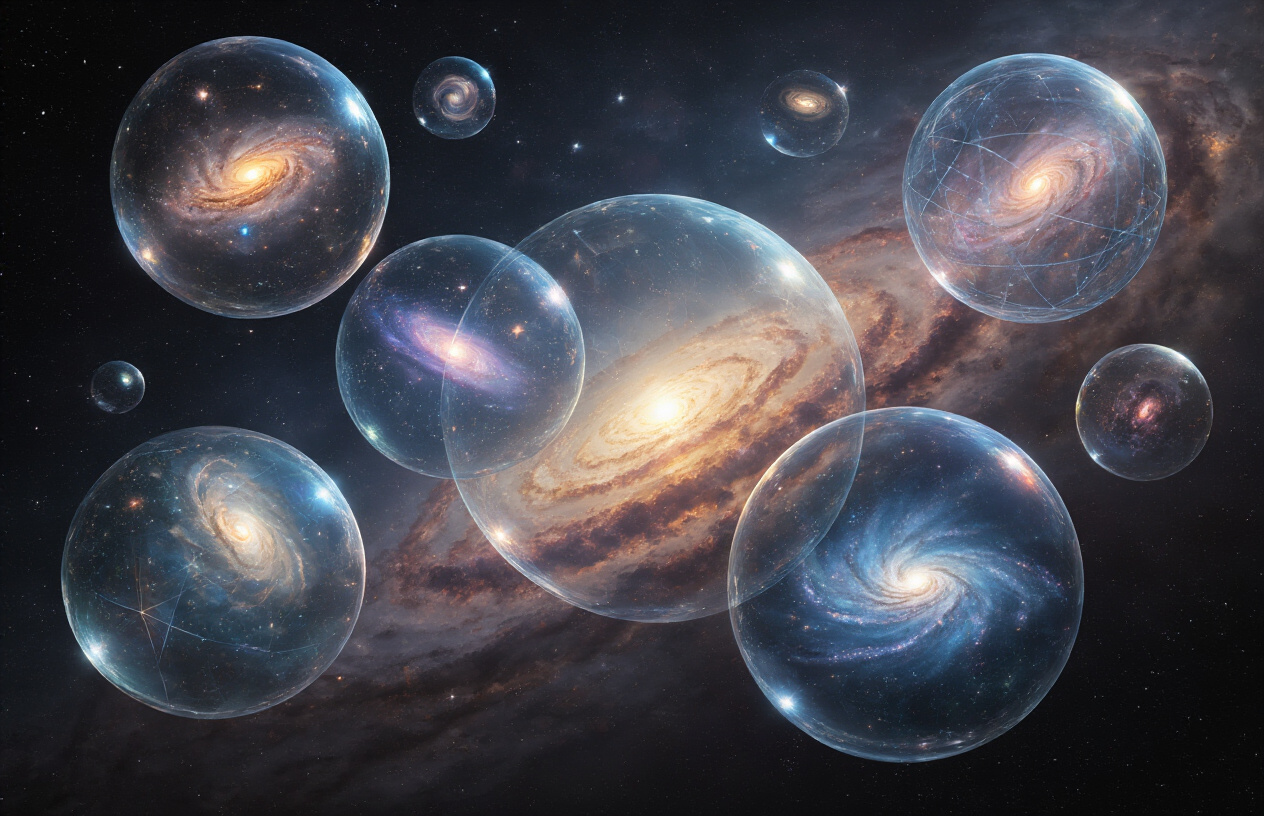
Mirror Universes with Opposite Physical Laws
Imagine a world where gravity pushes instead of pulls, where time flows backward, and where the fundamental forces we take for granted work in completely reverse. Mirror universes represent one of the most mind-bending concepts in parallel universe theory, suggesting entire realities governed by inverted physical laws.
These parallel dimensions operate under what physicists call CP-violation symmetry breaking. In our universe, particles have specific charges and behaviors, but mirror universes contain antimatter counterparts where everything from electron spin to electromagnetic forces functions oppositely. If you could somehow peek into such a reality, you’d witness water flowing uphill, objects falling toward the sky, and chemical reactions proceeding in reverse.
The implications stretch beyond simple reversals. In mirror universes, causality itself might work differently. Effects could precede causes, creating temporal loops that would seem impossible in our reality. Some multiverse theory proponents suggest these realms could explain dark matter – perhaps it’s simply ordinary matter from mirror universes interacting weakly with our own.
What makes mirror universes particularly fascinating is how they maintain mathematical consistency while completely flipping our understanding of reality. They’re not just chaotic opposites but structured alternate realities following their own logical rules.
Quantum Universes Where Every Decision Creates New Realities
Every choice you make – from choosing coffee over tea to deciding which route to take home – potentially spawns entire new universes. This concept, known as the many worlds interpretation of quantum mechanics, suggests that parallel universes branch off continuously based on quantum events and conscious decisions.
When you flip a coin, quantum physics multiverse theory proposes that both outcomes occur simultaneously, each in its own universe. One version of you celebrates heads while another version experiences tails. Both realities are equally valid and continue evolving independently. This branching happens not just with human decisions but with every quantum interaction in the universe – from radioactive decay to photon behavior.
The mathematics behind this concept stems from quantum superposition, where particles exist in multiple states until observed. Instead of collapsing into one state, the many worlds interpretation suggests all possible states continue existing in separate parallel worlds. This creates an ever-expanding tree of realities, with new branches forming trillions of times per second.
Consider the profound implications: somewhere in the multiverse, there’s a version of you who made different career choices, moved to different cities, or never met certain people. Each quantum decision point creates a divergence, leading to radically different life paths across parallel dimensions.
Bubble Universes Born from Cosmic Inflation
Picture our entire observable universe as just one bubble floating in an infinite cosmic foam, surrounded by countless other bubble universes with their own unique properties. This bubble universe model emerges from cosmic inflation theory, which explains how our universe expanded rapidly after the Big Bang.
During the inflationary epoch, different regions of space-time experienced varying expansion rates and durations. Some areas stopped inflating and formed stable universes like ours, while others continued expanding or inflated at different rates. Each “bubble” that stopped inflating became a self-contained universe with its own physical constants, fundamental forces, and even dimensions.
These bubble universes exist within a larger structure called the multiverse, where each bubble operates under potentially different rules. One bubble might have stronger gravitational forces, creating universes where stars form differently. Another might have altered electromagnetic constants, producing entirely different atomic structures and chemical possibilities.
The spacing between these parallel universes is so vast that even light traveling for billions of years couldn’t bridge the gap between bubbles. Each universe remains causally disconnected from the others, developing independently with no possibility of interaction or communication.
What’s remarkable about bubble universes is their diversity. Multiverse science suggests that every possible combination of physical constants and laws exists somewhere within the cosmic foam. This means there are bubbles where life evolved differently, where matter behaves in ways we can’t imagine, and where the very fabric of reality follows rules completely alien to our experience.
Evidence and Clues That Support Multiverse Theories
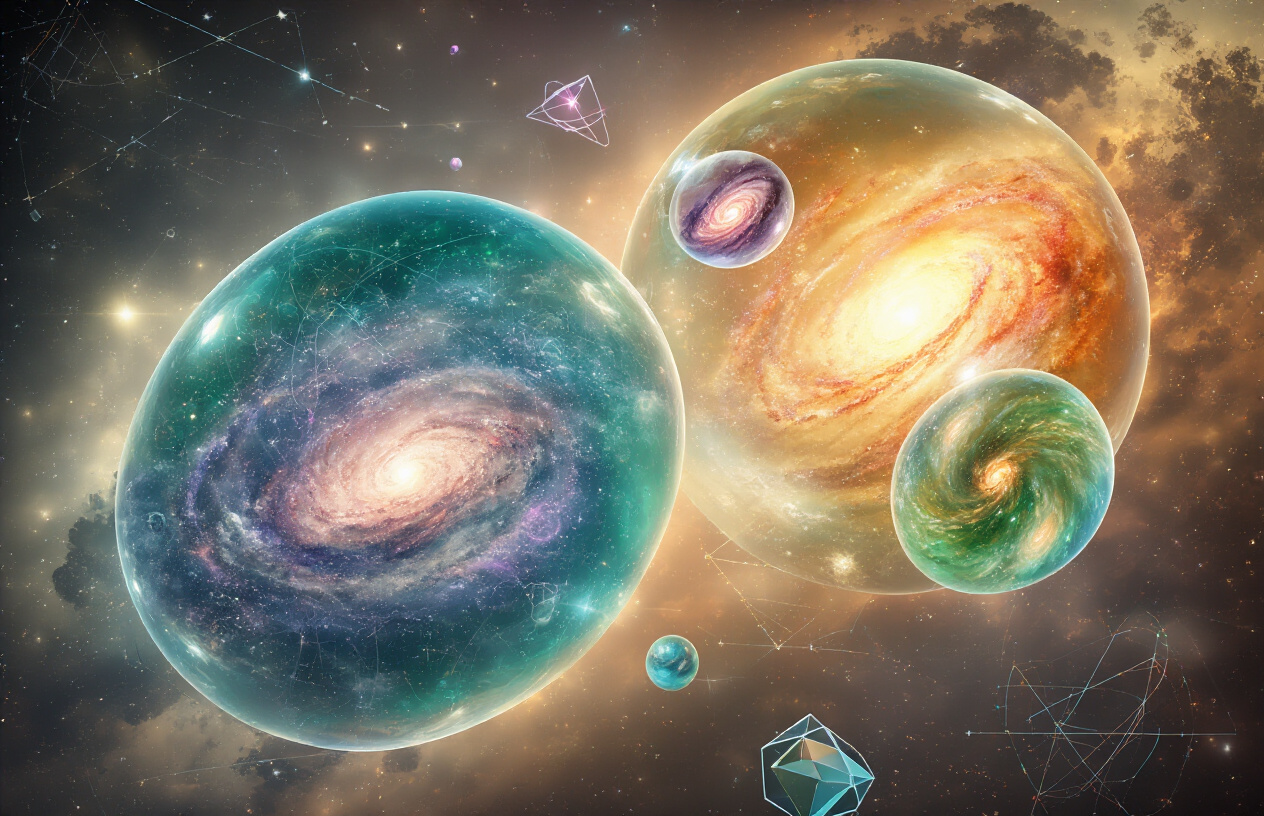
Cosmic Microwave Background Radiation Anomalies
The cosmic microwave background (CMB) radiation serves as our universe’s baby picture, capturing light from roughly 380,000 years after the Big Bang. Scientists expected this ancient light to show a perfectly uniform temperature across the sky, but reality delivered something far more intriguing. The CMB contains mysterious cold spots and temperature variations that current single-universe models struggle to explain adequately.
The most famous of these anomalies is the “Cold Spot” – a region roughly 1.8 billion light-years across that’s significantly cooler than surrounding areas. Some researchers propose this could be evidence of our universe colliding with another during early cosmic inflation. These parallel universe interactions might leave permanent scars in the CMB, creating the temperature patterns we observe today.
Recent satellite missions like Planck have detected additional oddities, including unexpected alignments in CMB fluctuations that some scientists interpret as potential signatures of multiverse activity. While conventional explanations exist for some anomalies, the clustering of multiple unexplained features has sparked serious consideration of parallel dimensions as a contributing factor.
Quantum Entanglement as a Bridge Between Worlds
Quantum entanglement creates instantaneous connections between particles regardless of distance, defying our everyday understanding of space and time. When two particles become entangled, measuring one immediately affects the other, even if they’re separated by billions of light-years. This “spooky action at a distance” might represent something more profound than Einstein ever imagined.
Quantum physics multiverse theories suggest entanglement could be the mechanism through which information travels between parallel realities. Some physicists propose that entangled particles exist simultaneously across multiple universe branches, with measurements causing temporary synchronization between these alternate realities.
The many worlds interpretation takes this concept even further, suggesting that every quantum measurement creates branching universes where all possible outcomes occur. In this framework, entanglement becomes the thread connecting these infinite realities, allowing glimpses of parallel existence through quantum correlations.
Recent experiments with quantum computers have demonstrated entanglement behaviors that seem to require computational resources exceeding what’s available in our observable universe. This has led some researchers to speculate that quantum computers might be borrowing processing power from parallel versions of themselves across the multiverse.
Dark Matter and Energy as Multiverse Interactions
Dark matter makes up roughly 27% of our universe, yet it remains completely invisible to direct observation. Dark energy, even more mysterious, comprises about 68% of cosmic content and drives accelerating universal expansion. Traditional physics offers limited explanations for these phenomena, but multiverse science presents compelling alternatives.
Some theories propose that dark matter consists of ordinary matter from parallel universes that interacts gravitationally with our reality but remains otherwise invisible. This “mirror matter” hypothesis suggests entire shadow ecosystems existing alongside our own, detectable only through their gravitational effects.
Dark energy’s constant density throughout space-time expansion puzzles cosmologists. Parallel worlds theory offers a solution: dark energy might represent the cumulative gravitational influence of countless parallel universes pressing against our cosmic boundaries. As our universe expands, it pushes against this multiverse pressure, creating the accelerating expansion we observe.
| Phenomenon | Traditional Explanation | Multiverse Alternative |
|---|---|---|
| Dark Matter | Unknown particles | Matter from parallel universes |
| Dark Energy | Cosmological constant | Multiverse gravitational pressure |
| Cosmic Acceleration | Vacuum energy | Inter-dimensional interactions |
Mathematical Consistency Across Different Universe Models
The mathematical frameworks describing quantum mechanics parallel universes demonstrate remarkable consistency across various theoretical approaches. String theory predicts up to 10^500 possible universe configurations, each representing a unique combination of physical constants and dimensional arrangements. This vast “landscape” of possibilities suggests our observed universe represents just one solution among countless mathematical alternatives.
The wave function mathematics underlying quantum mechanics naturally accommodates multiple simultaneous realities. When physicists solve Schrödinger’s equation for complex systems, the mathematics inherently describes all possible outcomes existing in superposition until observation collapses the wave function. The many worlds interpretation simply takes this mathematics at face value, suggesting all solutions remain real across parallel branches.
Inflationary cosmology models consistently produce multiverse scenarios regardless of starting assumptions. The mathematics of eternal inflation inevitably generates pocket universes with varying physical properties, creating a natural framework for cosmic theories involving multiple realities.
Advanced computer simulations modeling universe formation repeatedly generate multiverse structures when given realistic initial conditions. These mathematical models suggest that single-universe scenarios actually require fine-tuned parameters, while multiverse emergence appears to be the natural mathematical outcome.
Observable Universe Limitations That Hint at More
Our observable universe extends roughly 46.5 billion light-years in all directions, but this represents only the region from which light has had time to reach us since the Big Bang. The actual universe likely extends far beyond these observational boundaries, potentially infinitely.
The cosmic horizon creates a fundamental limitation: we can never directly observe regions beyond our light cone. This observational boundary means entire galaxies, clusters, and potentially different physical domains remain forever hidden from direct detection. Parallel universe evidence might exist just beyond our observational reach.
Cosmic inflation theory suggests our observable region represents an infinitesimally small fraction of the total inflated space. If inflation produced infinite space filled with quantum fluctuations, statistical mechanics guarantees that all possible arrangements of matter and energy occur repeatedly throughout this vast expanse. This creates natural reality beyond cosmos scenarios where identical copies of our observable region exist at unimaginable distances.
The uniformity of cosmic microwave background radiation across opposite sky regions presents another puzzle. These regions were never in causal contact during the early universe, yet they share nearly identical temperatures. While inflation explains this uniformity, it also implies vast unobservable regions with potentially different physical properties exist beyond our detection capabilities.
Recent observations of galaxy distributions near the edge of our observable universe show unusual alignments and structures that hint at gravitational influences from beyond the cosmic horizon. These multiverse applications in observational astronomy suggest our universe continues far beyond what we can directly observe, potentially harboring entirely different physical regimes.
How Parallel Universes Could Impact Your Understanding of Existence

Personal Identity Across Multiple Realities
The concept of a parallel universe forces us to confront unsettling questions about who we really are. If infinite versions of you exist across countless dimensions, which one represents the “real” you? In one reality, you might be a world-renowned scientist, while in another, you never graduated high school. Each version shares your genetic makeup but has lived through different experiences that shaped entirely different personalities.
This multiplicity challenges our fundamental understanding of self. Your memories, achievements, and failures might be unique to this specific reality, making your current identity just one slice of an infinite pie. Some versions of you might have made completely opposite life choices, raising profound questions about whether your core essence remains consistent across alternate realities.
The many worlds interpretation suggests that every decision creates a branch where both outcomes occur simultaneously. This means countless versions of you exist, each believing they’re the “original” while living completely authentic lives shaped by different circumstances.
Free Will versus Predetermined Outcomes in Infinite Worlds
Multiverse theory creates a fascinating paradox about free will. If every possible choice you could make actually happens across different parallel dimensions, does choice itself become meaningless? When you decide between chocolate and vanilla ice cream, both versions exist – one where you chose chocolate, another where you picked vanilla.
This perspective might initially seem liberating. Every path you didn’t take still gets explored by another version of yourself somewhere in the cosmic expanse. Regrets about missed opportunities lose their sting when you realize that alternate versions of you pursued those very paths.
However, this raises uncomfortable questions about personal responsibility. If all outcomes occur regardless of your choices, what drives moral behavior? The answer might lie in recognizing that while all possibilities exist, your conscious experience remains singular and meaningful within your specific reality.
Quantum mechanics parallel universes don’t eliminate free will – they multiply it infinitely. Your choices still matter profoundly for the reality you inhabit, even if other versions exist elsewhere.
Death and Consciousness in a Multiverse Framework
Death takes on radically different meanings when viewed through the lens of parallel dimensions. Traditional concepts of mortality assume consciousness ends when biological functions cease. But multiverse science suggests a more complex picture where death might only affect one specific version of you.
Some interpretations propose that consciousness could continue existing in realities where you survived whatever caused death in this dimension. This doesn’t guarantee immortality, but it suggests that death might be more like a transition than a complete ending. Your awareness could theoretically persist in countless other realities where different circumstances kept you alive.
This framework also raises questions about whether consciousness itself operates across multiple dimensions simultaneously. Perhaps what we experience as singular awareness is actually a narrow slice of a much broader consciousness that spans numerous parallel worlds theory realities.
The implications extend beyond personal mortality. If consciousness can exist across multiple realities, then death becomes less of an absolute boundary and more of a shift in the dimensional focus of awareness. This perspective doesn’t diminish the significance of life in our current reality, but it offers a profoundly different context for understanding our existence across dimensions.
Real-World Applications and Future Possibilities
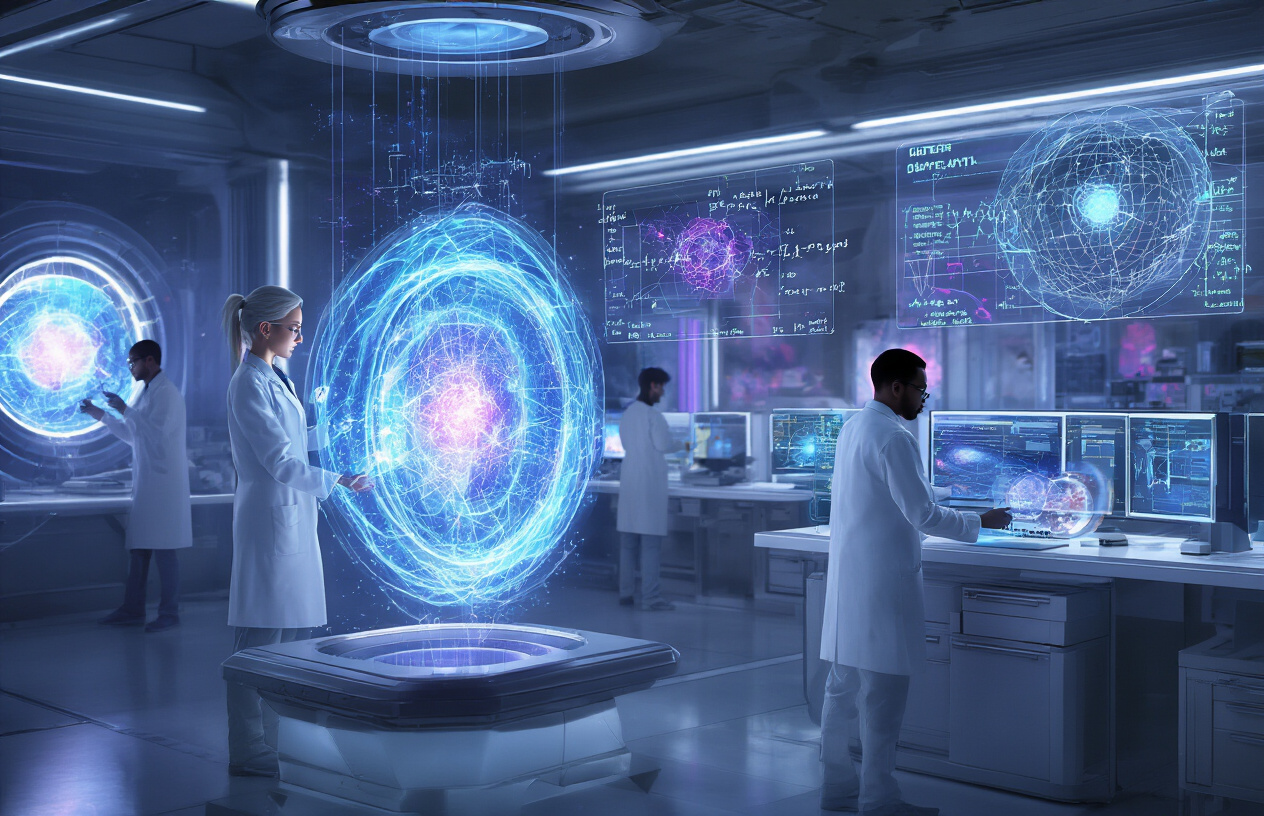
Quantum Computing Based on Parallel Processing
Quantum computers already tap into the strange world of superposition, where particles exist in multiple states simultaneously. Taking this concept further, multiverse theory suggests these quantum states might represent actual parallel realities. Scientists are exploring whether quantum processing power could be exponentially increased by harnessing computational resources from parallel dimensions.
Imagine a quantum computer that doesn’t just process information in superposition, but actually distributes calculations across multiple parallel universes. Each universe would handle different aspects of a problem, with results converging back into our reality. This could revolutionize everything from drug discovery to climate modeling, solving problems that would take classical computers millions of years.
Research teams are already investigating quantum entanglement as a potential bridge between parallel worlds. The phenomenon where particles remain connected regardless of distance might be evidence of information sharing across dimensional boundaries. Future quantum computing architectures could exploit these connections, creating processing networks that span multiple realities.
Time Travel Implications Through Universe Jumping
The many worlds interpretation opens fascinating possibilities for temporal manipulation without creating paradoxes. Rather than traveling backward through time in our own universe, future technology might allow us to jump sideways into parallel dimensions where different historical outcomes occurred.
This approach sidesteps the grandfather paradox entirely. Instead of changing the past and creating contradictions, travelers would simply visit alternate realities where those changes already happened naturally. You could witness dinosaurs, meet historical figures, or explore “what if” scenarios without disrupting your home timeline.
Theoretical physicists propose that universe-jumping technology might work through quantum tunneling between dimensional barriers. Just as particles can tunnel through energy barriers in our reality, specially designed vessels might tunnel through the fabric separating parallel worlds. The challenge lies in navigation – finding the right parallel universe among infinite possibilities.
Communication Methods Between Parallel Worlds
Quantum entanglement might serve as the foundation for interdimensional communication networks. When particles become entangled, they share information instantaneously across any distance. If parallel universe theory holds true, entangled particles might exist across dimensional boundaries, creating natural communication channels.
Scientists are exploring whether quantum field fluctuations could carry encoded messages between realities. These fluctuations occur constantly in empty space, and subtle patterns within them might represent attempts at communication from parallel dimensions. Advanced detection equipment could potentially decode these signals, revealing messages from alternate versions of ourselves.
Another promising avenue involves gravitational waves, which ripple through spacetime itself. Since gravity might be the only force that operates across all dimensions, gravitational wave patterns could carry information between parallel worlds. Future gravitational wave detectors might pick up artificial patterns generated by advanced civilizations in neighboring realities.
Space Exploration Beyond Our Universe’s Boundaries
Traditional space exploration focuses on reaching distant planets and stars within our observable universe. However, parallel universe theory suggests an entirely new frontier – exploring alternate realities with different physical laws, histories, and possibilities.
Interdimensional spacecraft would need revolutionary propulsion systems capable of breaking through the barriers between worlds. These vehicles might use exotic matter or negative energy to create temporary rifts in spacetime, allowing passage between parallel dimensions. Each universe could contain unique resources, technologies, or even entirely different forms of life.
The implications for human civilization are staggering. Parallel universes might offer refuge if our world faces extinction, provide unlimited resources from realities where scarcity doesn’t exist, or reveal scientific principles that don’t apply in our reality. Some parallel worlds might have solved problems we still struggle with – climate change, disease, or energy production.
Exploration teams would need to prepare for drastically different environments. Some parallel universes might have stronger or weaker gravity, different atmospheric compositions, or even alternative versions of fundamental constants like the speed of light. Navigation would become incredibly complex, as traditional GPS systems and stellar navigation wouldn’t work across dimensional boundaries.
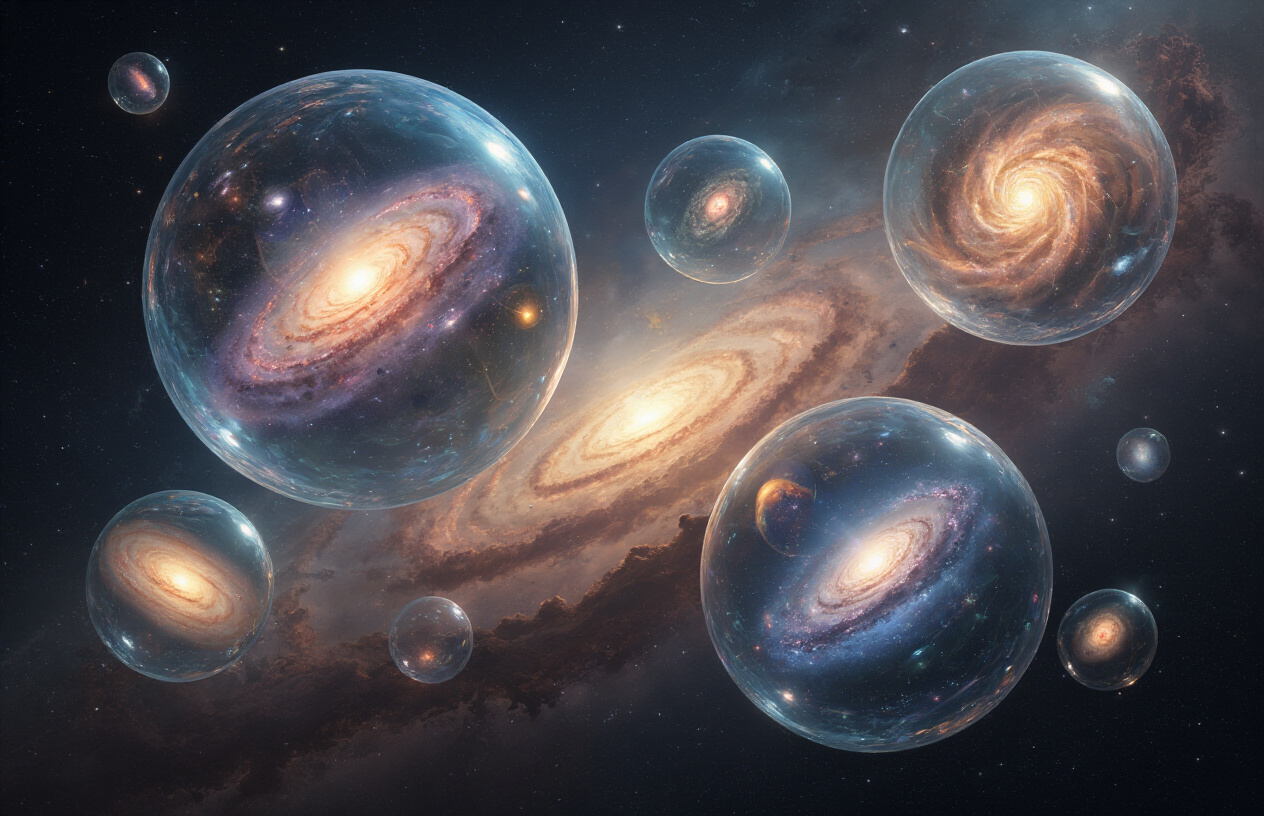
The concept of parallel universes pushes us to rethink everything we thought we knew about reality. From quantum mechanics suggesting infinite versions of ourselves to cosmic inflation creating bubble universes, the science behind multiverses isn’t just science fiction anymore. The evidence may still be indirect, but the mathematical frameworks and observations from quantum experiments give us real reasons to consider that our universe might be just one of countless others existing alongside us.
What makes this topic so compelling is how it changes the way we see our place in existence. If parallel universes are real, every decision you make might play out differently in another reality, and every possibility might actually happen somewhere. This isn’t just mind-bending theory – it could reshape fields like quantum computing, space exploration, and even philosophy. The next time you wonder “what if things had gone differently,” remember that according to multiverse theory, they probably did, just not in the universe you’re experiencing right now.





